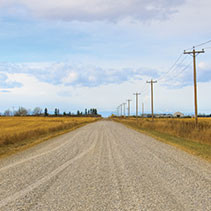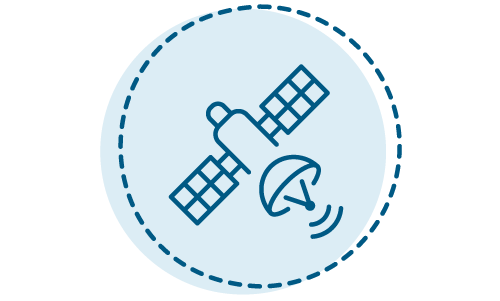Government mail service may be affected by the Canada Post labour disruption. Learn about how critical government mail will be handled.
Overview
The Alberta Broadband Strategy identifies opportunities and challenges of improving access to broadband connectivity and sets a clear path to eliminate the digital divide as quickly as possible.
To help achieve these goals, we've allocated $100 million to date to the Alberta Broadband Fund and made a joint commitment of $780 million with the federal government to improve access to high-speed internet in rural, remote and Indigenous communities.
The Alberta Broadband Strategy supports efforts to continue to grow and diversify Alberta’s economy, strengthen our workforce, build for the future, and help Albertans.
Documents
Taking action
A made-in-Alberta solution to help ensure every household in Alberta can access high-speed internet.
Learn more about broadband projects moving forward across the province.
Numbers at a glance
Nearly 489,000 Albertans do not have access to the internet speeds they need to work and learn from home.
67% of rural Albertans and 80% of Indigenous communities do not have access to reliable high-speed internet at federal target speeds.
Reaching 100% connectivity in Alberta will cost approximately $1 billion - we've already secured a total of $780 million in public funding from the Governments of Alberta and Canada.
The problem
-
 Eliminating the digital divide
Eliminating the digital divideWe worked with municipalities, Indigenous communities and the telecommunications industry to understand how big Alberta’s connectivity problem is, and what is required to fix it.
To solve this problem, our efforts will focus on improving access, affordability and quality.
-
Access
67% of rural Albertans and more than 80% of Indigenous communities do not have access to reliable high-speed internet at federal target speeds.
This represents approximately 201,000 households, or 489,000 Albertans, who are at an economic disadvantage to their peers living in urban centres.
Factors contributing to Alberta’s digital divide include low population density, distance from core network infrastructure, and challenging terrain. Each of these factors limit the business case for private investors to deliver services to underserved communities.
Rural Albertans faced similar issues with the development of electricity, natural gas, and traditional telephone lines. Rural Alberta was the last to be connected because of the challenging economics of providing other core services to the most remote regions of the province.
-
Affordability
Albertans will see few benefits of broadband deployment if the cost for services are unsustainable or too high to stay connected.
Factors impacting overall affordability include:
- cost of building new infrastructure
- long distances to core infrastructure
- geographical barriers
- low population density
- federal policy on spectrum auctions, licences and rights
- private sector partner capacity
Other challenges, such as delays in getting fibre technology, wireless infrastructure, and other electronics, also prevent us from deploying broadband all at once, even if the funding was available.
For these reasons, our phased approach will ensure that we do not overpay for connectivity improvements.
While pricing of internet services is federal jurisdiction and beyond the province’s direct control, we will work to ensure affordability is a consideration throughout our implementation.
-
Quality
Telecommunications networks can experience outages or failures resulting from a range of causes, including oversubscribed wireless infrastructure, cold weather, or damage incurred to fibre cables. In addition to these challenges, some communities have identified circumstances where actual connection speeds in their areas are lower than what is advertised.
Data collected by the federal government shows Internet Service Provider claims for which communities have access to connections at or above the universal connectivity target speeds, however, data does not currently show the actual delivered speeds for each location.
As broadband is deployed, investment must focus on solutions with strong and resilient networks that minimize potential outages, maintain consistency, and provide high-quality services to Albertans.
The solution
Reaching 100% connectivity in Alberta will depend on technology solutions, funding support, and policy reform.
Technology
A range of technological solutions will be required to meet the unique needs and characteristics of each community, while maintaining a sustainable, cost-effective approach to achieving universal connectivity. These include fibre-to-the-home, fixed wireless access, and low earth orbit satellite technologies.
-
 Fibre-to-the-home (FTTH)
Fibre-to-the-home (FTTH)Speeds: high
Reliability: highPrimarily in underserved rural and Indigenous areas within or on the edges of cities and towns that have sufficient population density and proximity to a fibre interconnection point.
- Expected to be used in cities and towns.
- Will serve rural and Indigenous communities that are close enough to cities and towns that have sufficient population density and proximity to a fibre connection point.
-
 Fixed wireless access (FWA)
Fixed wireless access (FWA)Speeds: medium
Reliability: mediumPrimarily in less dense rural and Indigenous areas where existing wireless infrastructure is already present and distances between dwellings is larger.
- Expected to be used primarily in rural municipalities, villages, summer villages, some First Nations and some Metis Settlements.
- Will be used where distance to existing infrastructure is available.
-
 Low earth orbit satellite (LEO)
Low earth orbit satellite (LEO)Speeds: medium
Reliability: TBDPrimarily in areas with very low population densities and challenging terrain. Distance from existing infrastructure would usually mean that fibre-to-the-home and fixed wireless access are not feasible solutions.
- Expected to be used in some rural municipalities, First Nations and Metis Settlements.
- Will be used where low population density and distance from existing infrastructure is an issue.
Note: the Starlink pilot project is now closed.
Funding
Alberta’s government has secured an additional matching agreement with the Government of Canada. Total public investment has increased to $780 million, with $390 million committed from each the Province of Alberta and the Government of Canada.
This funding will unlock a significant amount of private sector investment, and will be available to support Alberta-based broadband projects.
We are working with the federal government to review Alberta-based Universal Broadband Fund applications to select projects for funding. See which communities have received funding.
Alberta Broadband Fund
We’ve allocated $100 million to the Alberta Broadband Fund to expand access to broadband financial support and to ensure that no community is left behind as we implement the Alberta Broadband Strategy. Multiple funding streams were announced, with Stream 1 closed March 20, 2023 and Stream 2 closed November 8, 2024.
Policy
Regulatory decisions regarding telecommunications are a matter of federal jurisdiction. Some existing policies create challenges for private sector investment into rural connectivity infrastructure and the expansion of broadband in Alberta.
We are advocating for spectrum policy changes that includes:
- ensuring that rural and urban regions are not managed in the same service areas for spectrum licensing purposes, to better support development in underserved rural, remote, and Indigenous communities
- strengthening and enforcing a “use it or lose it” framework for spectrum licensing that ensures spectrum is more readily available to providers who can demonstrate intent to provide services to the region
- ensuring policies discourage the acquisition and resale of spectrum licences as a financial asset, and that buyers have realistic plans to develop the spectrum region
If the federal government adopts these changes, the economics of broadband will be improved and private sector investment can reach more rural Alberta communities with improved fixed wireless solutions.
Benefits
Access to reliable high-speed internet is one of the simplest things that can be achieved to continue to grow and diversify Alberta’s economy, strengthen our workforce, build for the future, and help Albertans.
Support economic growth and recovery by returning up to $1.7 billion in annual GDP growth to Alberta through improved connectivity for households and businesses.
Increase GDP in the agricultural sector by up to 5% through increased productivity and application of AgTech.
Create up to 1,500 jobs in Alberta to deploy and install the broadband technology needed to increase coverage.
Create thousands more jobs and opportunities across sectors as the economy grows and diversifies.
Foster reconciliation efforts by ensuring Indigenous communities are connected, have access to the services they need, and can participate meaningfully in our digital economy.
Ensure province-wide access to remote education for over 120,000 students, leading to better employment outcomes.
Improve access to healthcare for up to 40,000 Albertans who cannot currently access a primary care provider, reducing travel time and cost of accessing healthcare for patients.
Provide a digital ecosystem supportive of innovation and transformation, allowing Albertans to embrace these technologies to improve their daily lives.
News
- High-speed internet coming to Strathcona County (August 28, 2024)
- Connecting rural Alberta (June 14, 2024)
- High-speed connections for tens of thousands more homes (March 5, 2024)
- Rainbow Lake now connected like never before (November 15, 2023)
- Piloting Starlink in rural Alberta (November 16, 2023)
- Securing 10,000 Alberta homes to high-speed internet (July 11, 2023)
- Improving connectivity in Alberta (December 20, 2022)
- Alberta and Canada expand partnership to improve access to high-speed Internet for Albertans (March 9, 2022)
- Connecting Albertans, growing the economy (March 2, 2022)
- Alberta and Canada partner to expand connectivity (December 16, 2021)
- Expanding broadband internet in rural Alberta (July 22, 2021)